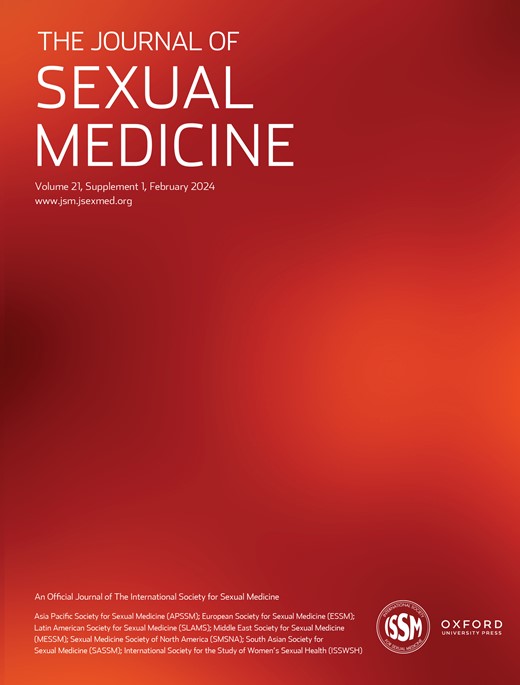*Our findings show that enclomiphene provides the same magnitude of improvement in testosterone but through safer means, as noted by its lower rate of documented adverse events
*Further research and larger studies are warranted to validate these conclusions and explore additional long-term effects of enclomiphene

 academic.oup.com
academic.oup.com
Abstract
Introduction
Clomiphene, and its trans isomer enclomiphene, have been used off-label in recent years for hypogonadal men seeking to maintain fertility. Both drugs have become increasingly widespread within andrology clinics; thus, understanding the comparative benefits and risks of these medications are crucial for optimizing treatment decisions and providing improved therapeutic options.

Objective
To investigate the longitudinal benefits and risks associated with enclomiphene compared to clomiphene to provide valuable insights for clinicians when making treatment decisions in the management of hypogonadism and male fertility preservation.
Methods
We retrospectively studied patients who had been prescribed clomiphene, and later enclomiphene, at a university hospital within the observation range of 1/1/2021-12/31/2022, encompassing 66 patients. All included patients were prescribed clomiphene prior to switching to enclomiphene. Baseline laboratory values for each patient prior to being prescribed clomiphene were documented, followed by subsequent values for each of these variables in the most recent visit prior to stopping clomiphene as well as any noted adverse effects experienced during this time. Laboratory values and adverse effects were noted for the same patients in their most recent visit while taking enclomiphene. Adverse events were defined by 1) depressive thoughts; 2) weak muscle strength; 3) gynecomastia; 4) mood changes; or 5) agitation as well as changes in estradiol and hematocrit laboratory values. Two-tailed T-Tests were employed using SPSS to analyze the longitudinal impacts of clomiphene and enclomiphene on serum hormone values.
Results
In our cohort, men on clomiphene experienced any adverse events 18.18% of the time, whereas men on enclomiphene experienced any adverse events 3.45% of the time. From our data, men on enclomiphene had statistically lower rates of documented adverse events than the same men on clomiphene, indicating no increased risk on the newer drug; neither treatment yielded any serious adverse events. In looking specifically at hormone-related adverse events, estradiol increased significantly on clomiphene but not on enclomiphene (17.25 versus -0.29 pg/mL; t=4.271, p=.00005). However, there was no difference in change in hematocrit between the two medications (0.10% versus 0.79% increase; t=-1.103, p=.314). On average, testosterone increased 149.33 ng/dL from their baseline scores while on clomiphene and increased 108.55 ng/dL from their clomiphene values while on enclomiphene. When comparing the improvement of testosterone values attributed to clomiphene versus enclomiphene, the change of testosterone levels over time attributed to either medication are not statistically different (t-value = .883; p-value = .379). Lastly, men stayed on clomiphene for an average of 32.92 months before switching to enclomiphene.
Conclusions
Our findings show that enclomiphene provides the same magnitude of improvement in testosterone but through safer means, as noted by its lower rate of documented adverse events. These findings support the use of enclomiphene as a comparable treatment option for hypogonadal men while minimizing the risk of adverse effects. Further research and larger studies are warranted to validate these conclusions and explore additional long-term effects of enclomiphene.
*Further research and larger studies are warranted to validate these conclusions and explore additional long-term effects of enclomiphene

(094) Safety and Efficacy of Enclomiphene Compared to Clomiphene for Hypogonadal Men
AbstractIntroduction. Clomiphene, and its trans isomer enclomiphene, have been used off-label in recent years for hypogonadal men seeking to maintain ferti
Abstract
Introduction
Clomiphene, and its trans isomer enclomiphene, have been used off-label in recent years for hypogonadal men seeking to maintain fertility. Both drugs have become increasingly widespread within andrology clinics; thus, understanding the comparative benefits and risks of these medications are crucial for optimizing treatment decisions and providing improved therapeutic options.
Objective
To investigate the longitudinal benefits and risks associated with enclomiphene compared to clomiphene to provide valuable insights for clinicians when making treatment decisions in the management of hypogonadism and male fertility preservation.
Methods
We retrospectively studied patients who had been prescribed clomiphene, and later enclomiphene, at a university hospital within the observation range of 1/1/2021-12/31/2022, encompassing 66 patients. All included patients were prescribed clomiphene prior to switching to enclomiphene. Baseline laboratory values for each patient prior to being prescribed clomiphene were documented, followed by subsequent values for each of these variables in the most recent visit prior to stopping clomiphene as well as any noted adverse effects experienced during this time. Laboratory values and adverse effects were noted for the same patients in their most recent visit while taking enclomiphene. Adverse events were defined by 1) depressive thoughts; 2) weak muscle strength; 3) gynecomastia; 4) mood changes; or 5) agitation as well as changes in estradiol and hematocrit laboratory values. Two-tailed T-Tests were employed using SPSS to analyze the longitudinal impacts of clomiphene and enclomiphene on serum hormone values.
Results
In our cohort, men on clomiphene experienced any adverse events 18.18% of the time, whereas men on enclomiphene experienced any adverse events 3.45% of the time. From our data, men on enclomiphene had statistically lower rates of documented adverse events than the same men on clomiphene, indicating no increased risk on the newer drug; neither treatment yielded any serious adverse events. In looking specifically at hormone-related adverse events, estradiol increased significantly on clomiphene but not on enclomiphene (17.25 versus -0.29 pg/mL; t=4.271, p=.00005). However, there was no difference in change in hematocrit between the two medications (0.10% versus 0.79% increase; t=-1.103, p=.314). On average, testosterone increased 149.33 ng/dL from their baseline scores while on clomiphene and increased 108.55 ng/dL from their clomiphene values while on enclomiphene. When comparing the improvement of testosterone values attributed to clomiphene versus enclomiphene, the change of testosterone levels over time attributed to either medication are not statistically different (t-value = .883; p-value = .379). Lastly, men stayed on clomiphene for an average of 32.92 months before switching to enclomiphene.
Conclusions
Our findings show that enclomiphene provides the same magnitude of improvement in testosterone but through safer means, as noted by its lower rate of documented adverse events. These findings support the use of enclomiphene as a comparable treatment option for hypogonadal men while minimizing the risk of adverse effects. Further research and larger studies are warranted to validate these conclusions and explore additional long-term effects of enclomiphene.













